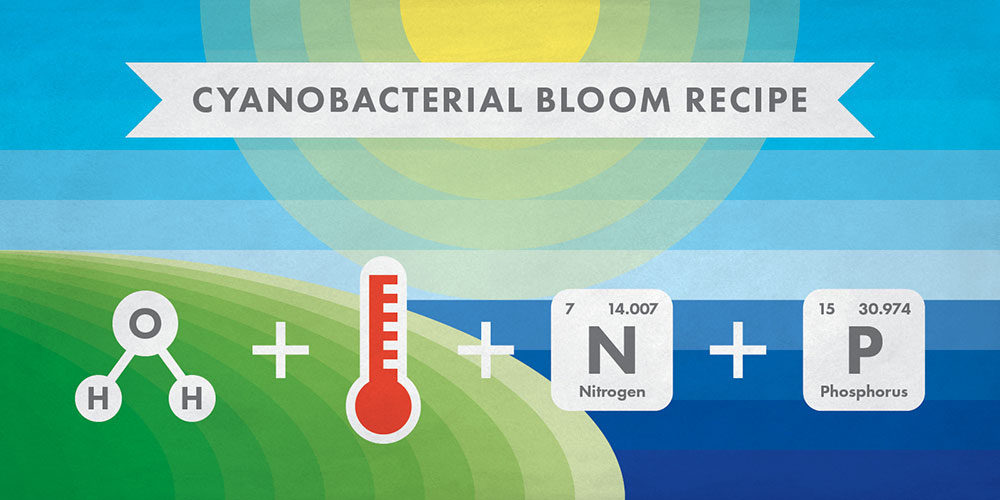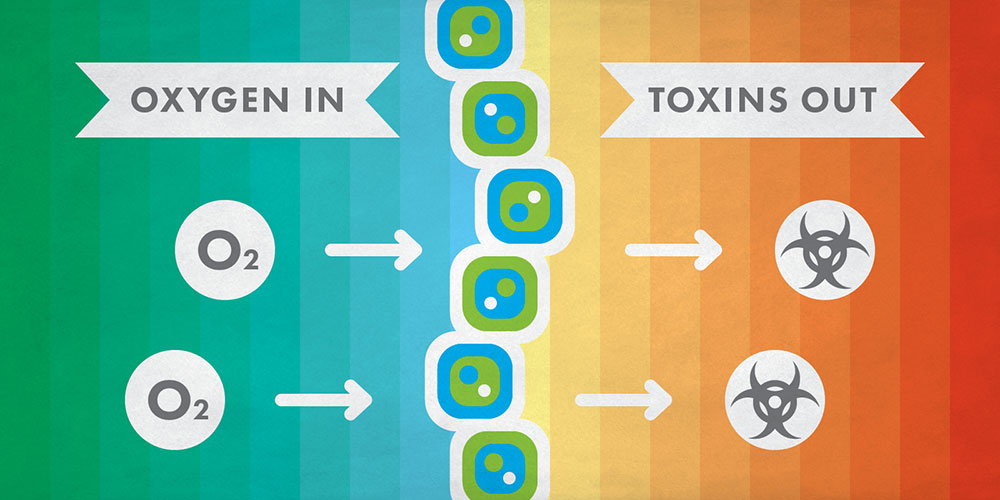How good water goes green and what it means to animal and human health
Alberta has experienced no shortage of heat waves and rain this summer. That mix has proven perfect for blue-green algae blooms. As of mid-summer, more than 30 public lakes in the province had blue-green algae advisories in place.
The phenomenon is easily recognizable on water bodies as floating blankets of green scum or what looks like grass clippings. It’s blue-green in colour and has a musty or grassy smell.
But, it’s not actually algae, says Michelle Harris (Biological Sciences Technology - Renewable Resources '11), an environmental educator and assistant manager of WILD Outside, a youth program delivered through the Canadian Wildlife Federation.
“It’s actually a bacterial bloom,” says Harris. “These cyanobacteria are microscopic. They’re tiny but when they bloom they can create really big issues.”
What is true, however, is that the blooms are the result of a combination of not just environmental factors but human. They’re also a serious cause for caution.
How blooms happen

First, of course, you need water for a bloom to form, and preferably still, says Harris. “Most of the advisories will be on lakes and ponds.” Then, she adds, “you need to have higher temperatures. Any photosynthesizing thing loves the heat, so the more sun the better.”
The last ingredients are nutrients such as nitrogen and phosphorus that are found in synthetic fertilizers often used on farms, lawns, golf courses and other areas adjacent to water bodies, which can be carried into them in part by heavy rains.
“They are the really precious things out in nature, so organisms have been hardwired to suck them up like crazy and make the most of it.”
Under these conditions, cyanobacteria can grow vigorously into blooms.
Why blooms are bad

When thriving, cyanobacteria can harm wildlife, pets and humans. The bacteria release toxins that can kill fish and other small animals if ingested, or cause illness, skin and eye irritation in humans.
Also, cyanobacteria negatively affect environments when they die and decompose, using up large amounts of oxygen from the water during this process and depriving plants and animals.
“All of our happy little invertebrates, fish and things that need oxygen are really at risk,” says Harris.
“If there’s an advisory on the shore that says, ‘Do not go in the water because of an algae bloom,’ please respect that,” she adds. “That is not just coming from a biologist that’s saying, ‘This water isn’t good.’ That’s coming from Alberta Health Services.”
AHS recommends avoiding all contact with cyanobacterial blooms, including swimming, using the water to irrigate edible plants or eating fish. Even drinking or cooking with boiled contaminated water is not recommended, as boiling the water does not remove the cyanotoxins.
Wait it out – and be proactive

Blue-green algae blooms usually dissipate after several weeks, and their impacts gradually decrease once temperatures cool. Harris attributes this to the resiliency of environments, and the algae’s natural boom-and-bust cycle.
“Our bodies of water are used to seeing these blooms, so we shouldn’t really see any long-term impacts going into the fall and winter,” she says. “Of course, if there’s any sort of dieback, like if it killed fish or things like that, obviously that won’t be remedied in a couple of months.”
There are steps Albertans can take to help prevent cyanobacterial blooms, such as keeping septic systems well maintained, which will minimize the discharge of nutrients into the environment, says Harris. Land users are also advised to reduce the use of fertilizers around water bodies and to keep a buffer zone of plants above the lake to absorb excess nutrients.
“[Also], because we know that the heat waves coming through Alberta are directly related to climate change, any of our climate change mitigation methods will inevitably help with blooms,” Harris says.